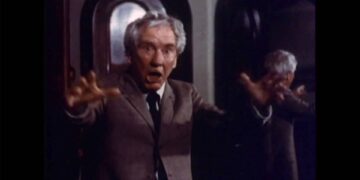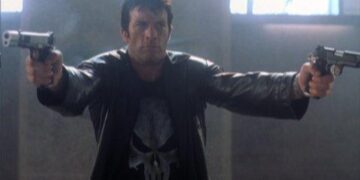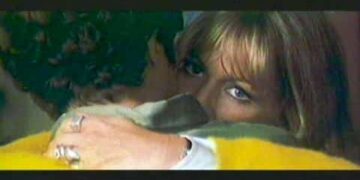Welcome to our comprehensive guide to Baba Yaga, a 1973 Italian film, based on the book by Guido Crepax.
In this guide, we will take a deep dive into the movie and book, including summaries, notable differences, and insights.
We will also provide a parent guide, information on film locations, character descriptions, memorable quotes, and much more. So, sit back and get ready to explore the enchanting world of Crepax’s witches!
Baba Yaga: The Film
Summary of the movie
Baba Yaga is a 1973 Italian horror film, directed by Corrado Farina, and based on the book by Guido Crepax. The story revolves around Valentina, a successful photographer, who meets the mysterious Baba Yaga, a witch with a penchant for sadomasochism.
As Valentina is drawn deeper into Baba Yaga’s world, she starts to question her sanity and reality itself. The film masterfully blends psychological horror with the surreal, creating a truly unique cinematic experience.
Notable cast and crew
The film stars Carroll Baker as Baba Yaga, Isabelle De Funí¨s as Valentina, and George Eastman as Arno.
The film was directed by Corrado Farina, who also co-wrote the screenplay with Giulio Berruti. The cinematography was handled by Aiace Parolin, and the editing was done by Giulio Berruti.
Film locations
Baba Yaga was primarily filmed in Milan, Italy. The city’s unique architecture and vibrant atmosphere provide a perfect backdrop for the film’s surreal and haunting imagery.
Notable locations featured in the film include the iconic Piazza del Duomo, the Galleria Vittorio Emanuele II, and the Navigli district.
The soundtrack by Piero Umiliani
The film’s haunting and atmospheric soundtrack was composed by the legendary Italian composer Piero Umiliani. Known for his work on numerous Italian films and television shows, Umiliani’s score for Baba Yaga perfectly complements the film’s eerie and sensual atmosphere.
Baba Yaga: The Book
Guido Crepax bio and works
Guido Crepax was an Italian comic book artist and writer, best known for his work in the adult and erotic genres. Born in Milan in 1933, Crepax began his career as a graphic designer before transitioning to comic book art in the early 1960s.
His most famous creation is Valentina, the protagonist of Baba Yaga, who first appeared in the comic series “Valentina” in 1965. Crepax continued to create comics until his death in 2003.
Summary of the book
The book, which serves as the basis for the film, follows photographer Valentina as she encounters the enigmatic Baba Yaga.
The witch, intrigued by Valentina’s beauty and talent, decides to use her as a pawn in her sadomasochistic games.
As Valentina becomes entwined in Baba Yaga’s web, she begins to question her own sanity and the nature of reality.
Valentina comic series
Valentina is the protagonist of the comic series created by Guido Crepax.
The series, which began in 1965, follows Valentina as she navigates her life as a photographer and her relationships with various characters, including the enigmatic Baba Yaga.
The comic series is known for its mix of surrealism, eroticism, and psychological horror.
Notable Differences between the Film and Book
While the film adaptation of Baba Yaga stays true to the original book’s storyline and characters, there are some notable differences between the two.
The film expands on the book’s surreal and psychological aspects, making it a more immersive and unsettling experience.
Additionally, the film’s visual style, particularly the use of color and lighting, differs from the book’s primarily black-and-white illustrations.
A Parent’s Guide to Baba Yaga
Baba Yaga is an adult-oriented film and book, featuring themes of sadomasochism, sexuality, and psychological horror.
While the film is not overly explicit in its depictions of these themes, it may not be suitable for younger audiences.
Parents should exercise discretion when deciding whether to allow their children to watch the film or read the book.
When and Where Baba Yaga Takes Place
The events of Baba Yaga take place in Milan, Italy, during the late 1960s and early 1970s. The city’s unique architecture and vibrant atmosphere provide a crucial backdrop for the story’s surreal and haunting events.
Who’s Who: Characters in Baba Yaga
- Valentina: A successful photographer who becomes entangled in Baba Yaga’s web.
- Baba Yaga: The enigmatic witch who becomes obsessed with Valentina.
- Arno: Valentina’s boyfriend and a fellow photographer.
- Wanda: Valentina’s friend and confidante.
Memorable Quotes from Baba Yaga
- “Photography is an act of love towards the world.” – Valentina
- “Your dreams are your reality. What you call reality is nothing but an invention.” – Baba Yaga
- “Photography is a way of imprisoning reality, of possessing the things that one loves.” – Arno
Curiosities and Trivia about Baba Yaga
- Director Corrado Farina originally wanted to cast Vanessa Redgrave in the role of Baba Yaga, but the producers insisted on Carroll Baker.
- The film’s iconic doll, Annette, was created by Italian artist Pino Pascali.
- Baba Yaga was banned in the UK until 1999 due to its explicit content and themes.
Tips for Cosplaying and Dressing Like Baba Yaga Characters
- For Valentina, consider wearing a 60s or 70s-inspired outfit, such as a mini dress, turtleneck sweater, or wide-legged pants.
- Baba Yaga’s look can be achieved with a long, flowing gown, dark makeup, and a mysterious air.
- To cosplay as Arno, opt for a classic 60s or 70s outfit, such as a button-down shirt, blazer, and slacks.
The Ending of Baba Yaga Explained
The film’s ending sees Valentina finally breaking free from Baba Yaga’s spell, confronting the witch and seemingly defeating her.
However, in a twist, it is revealed that Baba Yaga has merely retreated into the shadows, ready to ensnare another victim. This ending reflects the theme of the cyclical nature of reality and the never-ending battle between good and evil.
Future Adaptations: Remake, Sequel, and Spin-off
As of yet, there have been no official announcements regarding any remakes, sequels, or spin-offs of Baba Yaga.
However, given the cult following of the film and book, as well as the enduring popularity of the Valentina character, it’s possible that we may see future adaptations in the coming years.
Other Media by Corrado Farina
Corrado Farina, an Italian film director and writer, is known for his unique contributions to the world of cinema.
Although he is best recognized for directing Baba Yaga (1973), he has also directed and written other movies such as “Hanno cambiato faccia†(1971) and “Amori miei†(1978).
“Hanno cambiato faccia†is a surreal horror film that explores the theme of consumerism, while Amori miei is a comedy that delves into the lives of two women who are in love with the same man.
Farina’s films often exhibit his distinct style that combines elements of horror, fantasy, and psychological thriller genres.
In addition to directing films, Farina has also written several books, including a biography on Guido Crepax, the creator of the original comic book series that inspired Baba Yaga.
The biography, titled “Guido Crepax: Portrait of an Artist,” explores Crepax’s life, artistic influences, and his career as a comic book artist.
Farina’s other literary works include “L’arte di arrangiarsi,” a guide on the art of living and “Il cinema nel pallone,” a collection of essays on the world of cinema.
Similar Media to Baba Yaga
If you enjoyed Baba Yaga and are looking for similar media to explore, there are several other films and books that delve into the world of witchcraft and the supernatural.
Some notable films include Suspiria (1977), a cult classic directed by Dario Argento that tells the story of an American ballet student who uncovers a coven of witches at her dance academy; The Witches (1990), a dark fantasy film based on Roald Dahl’s novel of the same name; and The Witch (2015), a historical horror film set in 17th century New England that follows a Puritan family as they encounter malevolent forces in the wilderness.
In the realm of literature, there are many books that explore the themes of witchcraft and the supernatural.
Some examples include “Witch Child” by Celia Rees, which tells the story of a young girl accused of witchcraft in 17th century England; “The Witch’s Daughter” by Paula Brackston, a historical fiction novel that follows the life of a witch who has lived for centuries; and “The Crucible” by Arthur Miller, a play that examines the infamous Salem witch trials.
Other Works by Guido Crepax
Guido Crepax, an Italian comic book artist and writer, is best known for creating the Valentina comic series, which served as the basis for Baba Yaga.
The series, which began in 1965, follows the adventures of Valentina Rosselli, a Milanese photojournalist who encounters various supernatural and fantastical elements in her life.
The series is notable for its blend of eroticism, surrealism, and psychological themes.
Crepax was also responsible for other comic book series that delved into similar themes as Valentina.
Some of these series include “Anita” (1966), which follows the adventures of a young girl as she interacts with bizarre and supernatural creatures; “Bianca” (1984), a story about a woman who has the ability to transform herself into different animals; and “The Love Stories of Edgar Allan Poe” (1989), a series of adaptations of Poe’s short stories that combine elements of gothic horror and eroticism.
Book Club Questions for Baba Yaga
If you’re interested in discussing Baba Yaga with your book club or friends, here are some questions to help guide your conversation:
- How do the themes of witchcraft and the supernatural manifest in both the film and comic book versions of Baba Yaga? How do these elements contribute to the overall atmosphere and tone of the story?
- Explore the differences between the film and comic book versions of Baba Yaga. How do these differences impact the story’s narrative and character development?
- What role does Valentina’s profession as a photojournalist play in the story? How does her career choice influence her interactions with the supernatural elements of the plot?
- Discuss the portrayal of female characters in both the film and comic book versions of Baba Yaga. How do these portrayals reflect societal views on women and their roles during the time period in which the stories were created?
- Analyze the use of eroticism in both the film and comic book versions of Baba Yaga. How do these erotic elements contribute to the overall themes and atmosphere of the story?
Exploring the World of Baba Yaga through Video Games and Travel
For those who are interested in further immersing themselves in the world of Baba Yaga, there are several video games and travel destinations that can help you do just that.
In the realm of video games, there is “The Witcher 3: Wild Hunt,” an action role-playing game that features a side quest involving Baba Yaga.
Additionally, “Rise of the Tomb Raider” includes a DLC story mission called “Baba Yaga: The Temple of the Witch,” which explores the legend of Baba Yaga in a new context.
If you’re interested in visiting locations related to Baba Yaga, consider traveling to Eastern Europe, where the folklore surrounding the character has its roots.
Countries such as Russia, Ukraine, and Poland all have rich cultural histories tied to this mythical figure.
You may also want to visit Milan, Italy, the setting for the Valentina comic series and the film adaptation of Baba Yaga.
Conclusion
Baba Yaga (1973) offers a unique and captivating exploration of witchcraft and the supernatural through the lens of Italian cinema and Guido Crepax’s Valentina comic series.
Whether you’re interested in delving deeper into the film’s themes, discovering other works by Crepax and Farina, or experiencing the world of Baba Yaga through video games and travel, there’s a wealth of opportunities to immerse yourself in this enchanting story.













